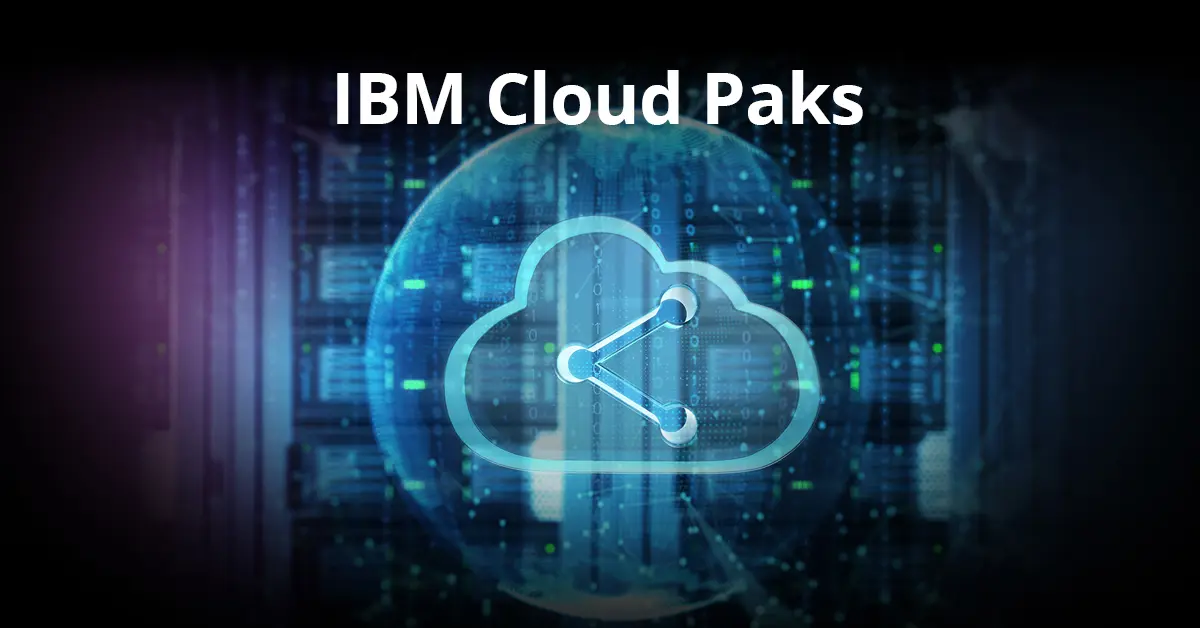
What are IBM Cloud Paks?
Added Friday 26 March 2021 by Prolifics
IBM Cloud Paks combine market-leading IBM software with the unlimited opportunities of open source technology and OpenShift. The software stack aims to bridge the skills gap, integration challenges and vendor lock-in issues that prevent many enterprises from moving their workloads to Cloud and modernising IT operations.
IBM’s acquisition of Red Hat just under a year ago was the largest deal ever for the ‘big blue’ tech giant. Joining forces with the open source pioneers, IBM extended Red Hat’s commitment to free and public innovation, with the shared goal of delivering a next-generation hybrid multicloud platform to customers.
The IBM Cloud Pak model shows us the kind of modernised software offerings that IBM can deliver alongside RedHat; enterprise-ready , solutions designed to move core business applications to the cloud faster. This is done by including containerised IBM middleware, common software development and management services an da common integration layer which reduces development time and slashes operational expenses.Cloud Paks can run anywhere that OpenShift does, giving customers’ choice and flexibility in their Cloud journey.
Here’s how Cloud Paks are currently helping businesses do more:
IBM Cloud Pak for Integration
Cloud Pak for Integration’s pre-installed capabilities include API lifecycle management, application and data integration alongside messaging and events. These components are increasing operational agility and changing the way retailers interact with their customers, giving them access to new sources of data upon which to build personalised customer experiences and offerings. Purchase history, location and inventory data, drawn from once-disparate back end systems could be combined to offer a customer a voucher code when they are close to a store.
IBM Cloud Pak for Applications
Cloud-Native apps offer several advantages over traditional applications, they’re easier to update, scale, and typically cost less. IBM Cloud Pak for Applications offers pre-built application stacks to accelerate cloud-native development with a microservice based framework. Apps built in the cloud can respond quickly to changes in customer activity and market demands. An airline might notice that people take a long time to choose seats on their flight, and spend less time selecting a destination or paying for a ticket. With containerised microservices, developers could scale up only the seat selection component of the app, with no interruptions to the rest of the service.
IBM Cloud Pak for Data
Effectively and securely managing enterprise data is the first step on the ladder to AI, and a place where many organisations stumble. IBM Cloud Pak for Data combines IBM Watson AI technology with the analytics and business tools needed to unify complex data sources, securely. With a no assembly required, easily deployable platform to capture, model, store and distribute data Cloud Pak for data, you can accelerate advanced analytics capabilities and gain valuable insights, faster. Companies are shortening their ‘journey to AI’ by leveraging tools like Watson OpenScale which allows users to continuously evaluate algorithms, models and data to ensure quality outcomes. Other Watson tools for Cloud Pak for Data include Watson Speech to Text; a machine learning service that extracts highest quality transcipts from call center audio. From financial services to healthcare, Cloud Pak is inventing new solutions for customer care.
Prolifics’ skill in leveraging Cloud Paks has been recognised by IBM with a 2020 Excellence Award and demonstrates our unmatched proficiency with this new, versatile and transformative technology. We’ve created solutions using both Cloud Pak for Integration and Cloud Pak for Data to address challenges in healthcare and finance.
If you'd like to find out more, contact us for a demonstration of any Cloud Pak’s capabilities or to learn more about what these products can help you achieve.
More Information
If you’d like hear more about this, please complete the form below:
